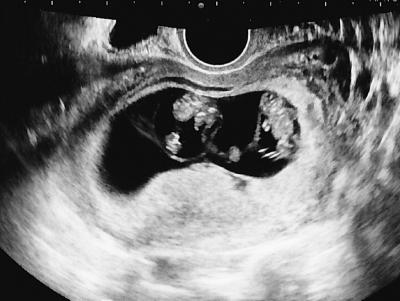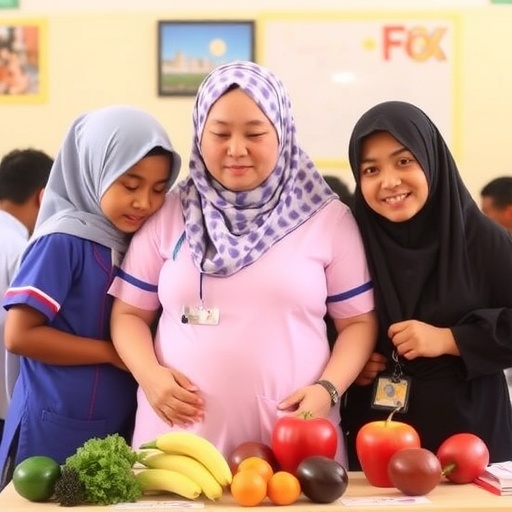
Credit: Credit/copyright: Keiji Kuroda
It has been known for some time that it is better to transfer a single embryo to a woman's womb during assisted reproduction treatment (ART) rather than several embryos in order to avoid a multiple pregnancy and the risks associated with it such as foetal deaths, miscarriage, premature delivery and low birthweight. However, even when single embryo transfer (SET) is performed, some women still become pregnant with twins or even triplets.
In a study published today (Tuesday) in Human Reproduction [1], one of the world's leading reproductive medicine journals, researchers have investigated one of the reasons why this happens and have, for the first time, been able to calculate that the proportion of multiple pregnancies after SET is 1.6% and that 1.36% of multiple pregnancies after SET occur as a result of a process called zygotic splitting.
These results come from the largest study to investigate zygotic splitting after SET – it analysed 937,848 SET cycles – and it highlights factors that could increase the risk. These include using frozen thawed embryos for SET, maturing the fertilised egg (blastocyst) in the laboratory for five or six days before SET, and assisted hatching, in which a small hole is created in the layer of proteins surrounding the embryo (the zona pellucida) to help the embryo hatch out and attach itself to the wall of the woman's womb.
One of the authors of the study, Dr Keiji Kuroda, of the Sugiyama Clinic Shinjuku and Juntendo University Faculty of Medicine in Japan, said: "As a result of our findings, clinicians may want to consider whether they should counsel couples about the small increase in the risk of multiple pregnancies as a result of zygotic splitting associated with some embryo manipulations."
A zygote is the fertilised egg cell that results from a man's sperm fertilising a woman's egg, and it contains all the genetic information from both parents to form a new individual. It soon starts to divide and subdivide into many more cells called blastomeres, which eventually form the embryo. Zygotic splitting occurs between days two and six when the zygote divides, usually into two, and each zygote then goes on to develop into an embryo, leading to identical twins (or triplets if it divides into three). These are known as "monozygotic" twins (or triplets).
It can be difficult to identify whether a multiple pregnancy has occurred after true zygotic splitting or as a result of SET combined with sexual intercourse that results in another egg being fertilised at the same time. The only way to be sure is to use ultrasound to see whether there are one or more gestational sacs and to detect the foetus or foetuses via their heartbeats. For this study, the researchers identified pregnancies arising from true zygotic splitting as those in which the number of foetuses exceeded the number of gestational sacs.
Dr Kuroda and his colleagues looked at nearly a million cycles of SET carried out in Japan between 2007 and 2014 and which were reported to the Japanese ART national registry (more than 99% of all ART treatment cycles have been entered in this registry since 2007). After SET using fresh or frozen and then thawed embryos, there were nearly 277,000 clinical pregnancies (29.5%), including 4,310 twins (1.56% of pregnancies) and 109 triplets (0.04% of pregnancies). The prevalence of true zygotic splitting was 1.36%, and the researchers found that, compared to singleton pregnancies, using frozen-thawed embryos increased the risk of zygotic splitting embryos by 34%, maturing the blastocysts in the lab for a few days before embryo transfer increased the risk by 79%, and assisted hatching by 21%.
Dr Kuroda said: "Blastocyst culture was associated with the highest risk of zygotic splitting out of the three risk factors we identified. Embryo selection using a computer-automated time-lapse image analysis test and transferring zygotes when they are just starting to divide may be solutions to decreasing the risk.
"However, it is important to point out that although the use of single embryo transfer has increased worldwide, the prevalence of zygotic splitting pregnancies has not. This may be because ART techniques, and also the cultures in which blastocysts are matured in the lab, have improved in recent years, reducing the stress on embryos and leading to a decrease in the risk of zygotic splitting. In fact, the risk of zygotic splitting from blastocyst culture was lower between 2010 and 2014 than between 2007 and 2014 – 79% and 120% respectively, although the reason for this is unknown. So, there may be no need to avoid embryo manipulations, such as blastocyst culture, in order to select the single most viable embryo."
The Japanese Society of Obstetrics and Gynaecology was the first society worldwide to recommend SET in 2008 in order to improve the safety of assisted reproduction. As a result of this policy, the proportion of SET cycles rose to 80% in 2015 and the proportion of multiple pregnancies fell to 3.2% [2].
Limitations of the study include the fact that the Japanese ART registry data regarding frozen-thawed embryo transfer did not include information about ovarian stimulation and fertilisation methods; information on assisted hatching was not included in the registry until 2010; the researchers had no way of validating if information submitted to the registry was correct; and the study is observational and so cannot prove that ART procedures cause zygotic splitting.
Dr Kuroda said that the findings should be applicable to other countries and races. "I have not seen any data on racial differences in zygotic splitting," he concluded.
###
###According to the Academy of Medical Sciences labelling system, this study is peer-reviewed, observational and conducted in people ###
[1] "Prevalence and risk factors of zygotic splitting after 937,848 single embryo transfer cycles", by Y. Ikemoto et al. Human Reproduction journal. doi:10.1093/humrep/dey294.
[2] The study received no external funding.
Media Contact
Emma Mason
[email protected]
@ESHRE
https://www.eshre.eu/
Related Journal Article
http://dx.doi.org/10.1093/humrep/dey294





